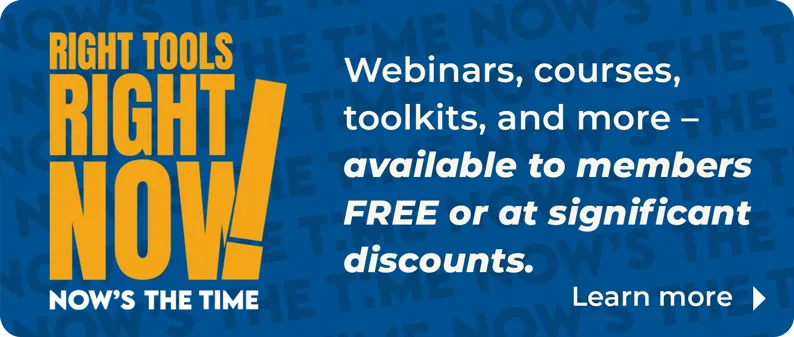In 2025, a full-time worker would need to make $33.60 per hour to afford the average rent for a modest two-bedroom apartment in the United States, according to the annual Out of Reach report from the National Low Income Housing Coalition (NLIHC), which also includes state-by-state information. The national minimum wage is $7.25 per hour, pointed out Renee Willis, president and CEO of NLIHC. In the NLIHC’s “2025 Gap Report,” researchers identified a shortage of 7.1 million homes affordable for extremely low-income renter households who earn 30 percent or below area median income.

While estimates of just how many homes the nation needs vary — with the U.S. Chamber of Commerce identifying a 4.7 million home shortage across all price ranges — the need for the development and preservation of affordable housing is clear. The solutions are complex and require a coalition of resources to make progress on the housing deficit, Willis said.
“The local level has to work hand in hand with state and federal financing,” Willis said. “Local officials and organizations know the needs best and can tailor policies to meet those needs, but they can’t afford to fund everything themselves.”
The same issues that face market-rate-housing developers — higher costs for land, labor, materials, insurance and borrowing — are exacerbated with affordable housing because of the need to keep rents reasonable, said Valerie White, head of national housing and strategic initiatives for the Local Initiatives Support Corp. (LISC), a nonprofit community development financial institution (CDFI) with 36 local offices and programs across 49 states. LISC serves as an intermediary that receives funding from banks, corporations, foundations and government agencies, then uses that funding to provide financing in the form of loans, grants and equity, as well as technical and management assistance to local partners and developers.
Federal Support: Low Income Housing Tax Credits
Low Income Housing Tax Credits (LIHTCs), the primary source of federal government affordable housing funding, are considered a successful tax program.
“The LIHTC program has led to the development of millions of affordable apartments,” said Evan Liddiard, director of tax policy for the National Association of REALTORS®. “This program is one of the few tax provisions with bipartisan support. The One Big Beautiful Bill increased LIHTC allocations by 12 percent for 2026 compared to 2025 funding, which is anticipated to lead to the development of 1.2 million more affordable rental units over the next 10 years than would have been built otherwise.”

LIHTC funds are allocated to state housing agencies based on population, Liddiard explained, with states deciding how to use the tax credits. The extra funding makes it possible for developers to invest in affordable housing.
“LIHTCs are used in the majority of affordable housing deals, but they’re not sufficient on their own,” said Patrick McAnaney, development director, Washington, D.C., for Somerset Development Co., which develops affordable, mixed-income and market-rate housing. “LIHTC funds typically cover about 30 to 40 percent of development costs.”
Most tax credit investors are banks that use the program to meet their Community Reinvestment Act requirements, he said.

“One issue is that LIHTC doesn’t effectively serve people with 30 percent or less of area median income (AMI), because rents are usually set for households with 60 percent AMI,” Willis said. “Households with extremely low incomes of 30 percent or less AMI would need rental assistance to meet the requirements, so there’s a need for more deeply affordable housing than what LIHTC can provide.”
Affordable Housing Financing
The main difference between financing market-rate and affordable rental housing, typically defined as rents affordable to households with income of 30 to 80 percent of AMI, is that the mandatory rent caps can’t cover building and operations costs, McAnaney explained.
“Developers can get a regular mortgage based on the income the property will produce, often enough to cover 30 to 40 percent of the costs,” he said. “The amount you can borrow depends on whether you’re building workforce housing or for people with 60 percent AMI or 30 percent AMI.”
Even with a mortgage and an equity investment with LIHTCs, a funding gap remains of 20 to 40 percent for most affordable housing projects, McAnaney explained. Filling that gap is a challenge that can be addressed in a variety of ways, such as with philanthropic investments and local funding.
“D.C. is a national leader for its second mortgage revolving loan fund,” McAnaney said. “Mayor Bowser committed to budget $100 million in D.C.’s Housing Production Trust Fund every year. However, there’s concern about funding for this going forward, in part because Congress cut $1 billion from the D.C. budget.”
In addition, companies such as Amazon and JBG Smith, a Washington, D.C.-area Real Estate Investment Trust (REIT), have provided capital through the Washington Housing Initiative Impact Pool to preserve and develop affordable housing in the region.
Local Government and Affordable Housing
Since local governments can’t address the housing crisis alone, they need to “act as a convener to bring together financial resources, builders, developers, real estate agents, nonprofit organizations and state and federal partners,” said Lauren Lowery, director of housing and community development for the National League of Cities (NLC).
“They also need to create an enabling environment to preserve and improve affordable housing options,” she said. “Governments can make land-use or zoning updates, but they can also bring together colleges, universities, local employers and healthcare systems to address housing issues.”
Local governments control zoning, land-use and permitting policies, which are critical levers for enabling affordable housing.
Local governments control zoning, land-use and permitting policies, which are critical levers for enabling affordable housing, said J. Patrick Cave, senior vice president of policy for Enterprise Community Partners, an affordable housing nonprofit organization. Regulatory changes that allow more density, reduce parking minimums, streamline approvals and allow accessory dwelling units (ADUs) can increase housing supply, he said.
“They can dedicate local resources such as land, trust funds and tax abatements to make projects feasible,” Cave said. “Some of the best practices employed by local governments include public-private partnerships, particularly with cities donating land for mixed-income housing.”
Other options, according to Cave, include preservation funds, which are revolving loan pools to quickly acquire at-risk properties before they flip to market-rate housing.
“Inclusionary zoning ... can also increase the supply of affordable housing,” Cave said. “Long-term affordability covenants can preserve affordability across generations.”
Partnerships are a key element of successful affordable housing programs, Willis said. “In King County, Wash., for example, a regional coalition created a multijurisdictional housing trust fund with 15 cities and the county. The coalition provided financial support of $300 million in 2024 to support more than 400 households in the county.”
Filling the Financing Gap
Multiple tools can be part of the capital stack for affordable housing development, including impact investment funds, which provide mission-driven capital with lower return expectations for investors, Cave said. Other tools include gap loans, housing trust funds and tax abatement financing, which reduces property taxes for owners.

“There are lots of solutions available to local governments, but the state often gives them authority based on their charter,” Lowery said. “Each local government is different. For example, Tempe, Ariz., wanted to use a tax increment financing option, but the state didn’t allow it.”
Tax increment financing is a government tool that provides funding for development based on future property tax revenue. The NLC’s Filling the Gap toolkit provides information about state and federal funding options and ideas about how to use local policies to leverage these funds, Lowery said.
Other potential sources of funds include community block grants from local governments, state or local housing finance agencies and community development financial institutions (CDFIs), which can be banks, credit unions or investment funds that provide funding for affordable housing and other community development needs such as schools, healthcare facilities and small business support, White said.
“Over the years, we’ve seen a change with more contributors to the capital stack for affordable developments,” White said. “It used to be four or five sources, but now there are 10 or 12 because of changes in the housing market and in the CDFI industry. Affordable housing is complex because you’re building something that will generate less revenue, yet you need to maintain the property and repay your investors in a rising cost environment.”
To solve that complexity, more capital is needed from private investors, White explained. “The growing gap between supply and demand for housing is attracting more investors, so the strategy is for local governments to work with the private sector and the public sector to bring in more capital. Municipalities and their housing trust funds are an important part of that.”
Housing Trust Funds
The National Housing Trust Fund, which was established in 2008, allocates funds to states for the development and preservation of affordable housing. Currently, there are 843 housing trust funds at state, county, city and town levels that provide flexible funding for affordable housing, Willis said. The NLIHC offers resources for developers to find these programs by location, and PolicyLink provides a toolkit for housing trust fund access.

“Developers apply for resources from a housing trust fund that can be a forgivable loan or a loan with a traditional repayment plan,” Willis said. In addition to federal funding, housing trust funds receive money from state and local governments and other sources. In New Jersey, for example, there are 318 municipal housing trust funds supported by development fees.
“Counties in New Jersey can also add a $3-per-document surcharge for real estate transactions on top of state fees specifically for the trust funds,” she said. “So far, eight counties have added that fee.”
Land Banks
A land bank is a legislatively created public authority that focuses on vacant and abandoned properties that can be used for another purpose such as affordable housing, according to Brian Larkin, director of the National Land Bank Network at the Center for Community Progress. There are about 350 land banks nationwide.
“The land is privately owned property, typically residential, but it can be a commercial or industrial property, too,” Larkin said. “About 85 percent of the properties are vacant without any structure on them, but the rest have some type of structure that will likely need to be knocked down.”
Most properties in a land bank are tax foreclosures, he said. “Tax foreclosures can be cheaper and easier to work with because after the foreclosure they have a clean title and don’t have liens. Tax foreclosures were a bigger part of land banks before property values started going up.”
In 2021, 77 percent of land bank properties were tax foreclosures, but now they are only 58 percent of properties, according to Larkin. Other sources of property include donations, government transfers from other legal settlements, property swaps and private purchases.
“When land banks started, the focus was to get rid of a problem structure, but now the focus is on accomplishing community goals with the property such as building affordable housing,” Larkin said. “It’s more common today to rehabilitate an existing building or use the property as part of an assemblage of land for development.”
While the property is in a land bank, it’s maintained and kept safe, he said. In some cases, the site is leveraged for workforce training, particularly in the construction trades. Developers and REALTORS® can search for land banks through the National Land Bank Network.
“The properties are typically the worst of the worst and will need a lot of work,” Larkin said. “The process of acquiring the property depends on each land bank’s requirements, so developers will need to reach out to them directly. It helps to have a deep familiarity with the community because most prioritize local residents and developers.”
Typically, the properties sell below market value, Larkin said. Land banks are established with subsidies from state or local governments to acquire the property and sell it at a lower cost.
REALTORS® may know of properties that could be a good fit for a land bank.
“REALTORS® may know of properties that could be a good fit for a land bank, so it’s worth building a relationship with a local land bank if one exists,” he said.
REALTOR® Role in Affordable Housing Advocacy
Since REALTORS® typically have deep market knowledge and broad community connections, they have an important role to play when it comes to housing issues, White said.
“They can find ways to expedite regulatory changes to increase housing supply and help connect various organizations and people for a public-private partnership,” she said. “They may also be able to identify potential properties for development and identify buyers who could produce more housing.” Among LISC’s many initiatives, it offers a New York Developers training program that is part of their goal to connect a variety of stakeholders including real estate agent trade associations to exchange information and facilitate opportunities, including affordable housing development.
“We’ll never solve the affordable housing crisis without addressing overall supply issues,” McAnaney said. “We still need a lot of market-rate production to keep prices down overall and to increase revenue from property taxes to invest in affordable housing programs. Mixed-income developments can be a big part of the solution.”
“REALTORS® and their associations can provide data about needs and supply trends at the local level, Lowery said. “They can also advocate at the local level to uphold solutions they see working on a regional or national level.”
Since REALTORS® have relationships with developers and local governments, they can bring people together, she said. The NLC and APA Housing Accelerator Playbookpdf, a collaboration by the National League of Cities and the American Planning Association in partnership with the National Association of REALTORS® (NAR) can be a resource for inspiration about regulatory reform that REALTORS® can recommend, such as small-scale single-family housing, adaptive reuse, modular housing and preapproved plans for developers to save time and money during the permitting phase.
“The Housing Accelerator Playbook was designed to help local leaders cut through complexity and move faster on solutions,” said Drew Meyers, policy representative for state and local issues at NAR. “It’s a practical guide communities can adapt — from small-scale, single-family housing to adaptive reuse — to expand supply and lower barriers for more affordable housing.
“REALTORS® see firsthand how outdated regulations limit housing choices. By partnering on the Playbook, we’ve created a resource that not only helps communities modernize ordinances, but also makes housing more attainable for families at every income level. This guide represents what can happen when REALTORS®, planners, and local governments work together.” Clearly, improving availability of affordable housing requires a network of resources and individuals on local, state and federal levels. REALTORS® can serve as connectors within their communities and associations.











